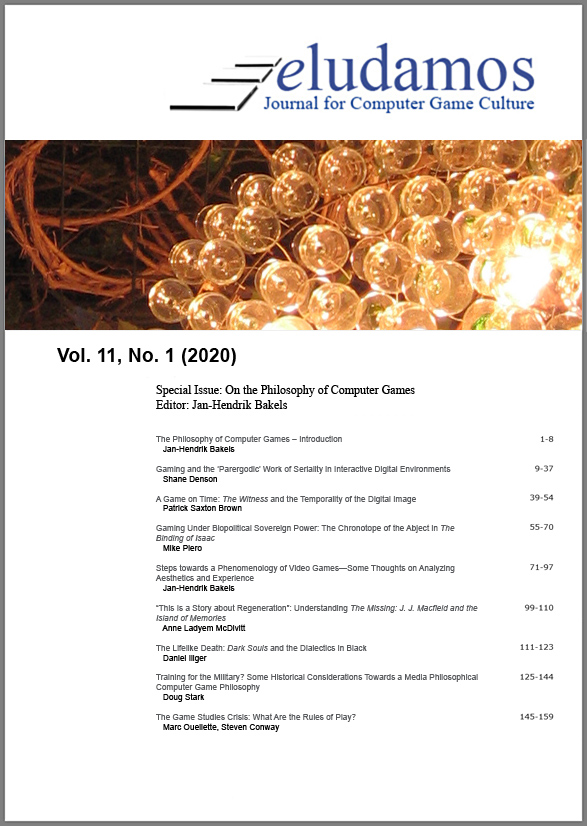The Lifelike Death: Dark Souls and the Dialectics in Black
DOI:
https://doi.org/10.7557/23.6357Abstract
The article builds on Badious observation, that black is simultaneously characterized by lack and excess. In the Dark Souls trilogy the “dialectics in black” are realized as a law of movement, which structures how the game world is acquired. The games highlight a series of conflicting temporalities, which are realized in the play experience as a being-in-the-present. From the perspective of assemblage, this dynamic of conflicting temporalities can also be conceptualized as a longing for the melding of the human and inhuman. Here one can also find a hint as to how the Dark Souls games create “communities out of shared hardship” (Keza MacDonald and Killingsworth). In their many temporalities as well as in their specific game mechanics, the Dark Souls trilogy plots a hauntingly concrete point of contact between anonymous players, who feel connected in their shared loneliness.Publication Facts
Metric
This article
Other articles
Peer reviewers
0
2.4
Reviewer profiles N/A
Author statements
Author statements
This article
Other articles
Data availability
N/A
16%
External funding
No
32%
Competing interests
N/A
11%
Metric
This journal
Other journals
Articles accepted
12%
33%
Days to publication
1
145
Indexed in
-
—
- Academic society
- N/A
- Publisher
- Septentrio Academic Publishing
Downloads
Published
2021-09-03
How to Cite
Illger, D. (2021) “The Lifelike Death: Dark Souls and the Dialectics in Black”, Eludamos: Journal for Computer Game Culture, 11(1), pp. 111–123. doi: 10.7557/23.6357.
Issue
Section
Perspectives








